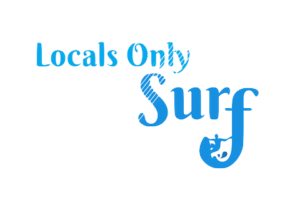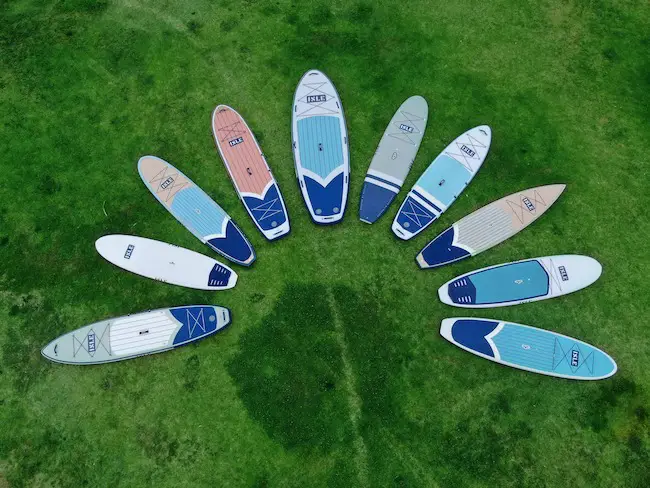Paddleboarding is a relatively new water sport that has been gaining popularity in recent years. It’s a great workout and a lot of fun, and it’s something that just about anyone can do. If you’re thinking about giving paddleboarding a try, here are a few things you should know.
What is paddleboarding?
Paddleboarding is a relatively new water sport that has quickly gained popularity in recent years. Also known as stand-up paddleboarding, this activity involves standing on a large board and propelling yourself through the water with a paddle. While paddleboarding can be enjoyed in a variety of different settings, it is often used as a way to explore remote lakes and waterways.
Paddleboards are wider and longer than traditional surfboards, making them more stable and easier to balance on. As a result, they are ideal for beginners who are just learning the sport. In addition, paddleboards are often used for yoga and fitness classes, as they provide a unique and challenging way to exercise.
Whether you are looking for a new way to enjoy the water or simply want to try something different, paddleboarding is definitely worth considering.
The benefits of paddleboarding
Paddleboarding is a great way to enjoy the outdoors and get some exercise. The low-impact activity is easy on the joints, and it provides a full-body workout. Paddleboarding also builds core strength and can help improve balance. In addition, paddleboarding is a great way to relax and de-stress. The rhythmic movement of paddling can be calming, and being out on the water can help clear your mind. If you’re looking for a new way to enjoy the outdoors, give paddleboarding a try.
The best places to paddleboard
Paddleboarding is a great way to get out on the water and enjoy the scenery. While it can be done in almost any body of water, some locations are better than others. For example, flat, calm water is ideal for beginners, while more experienced paddleboarders may prefer waves and other challenges. Here are some of the best places to paddleboard, depending on your level of experience:
-Flatwater: Lakes, canals, and slow-moving rivers are all great options for flatwater paddleboarding. This is where you’ll find the most beginner-friendly conditions.
-Waves: The ocean is the obvious choice for wave paddleboarding, but you can also find sometimes find waves on lakes and rivers. Just be sure to stay away from areas with strong currents or dangerous wildlife. You don’t want to fall into a river with crocodiles!
-Whitewater: If you’re looking for a real challenge, whitewater paddleboarding is for you. Rapids and other obstacles make this a thrill seeker’s paradise. However, it’s also important to be aware of the dangers involved. Only attempt whitewater paddleboarding if you’re an experienced paddler with proper safety gear.

How To Get Started With Paddleboarding
First, you’ll need to find the right board. Paddleboards come in all shapes and sizes, so it’s important to choose one that’s right for you. If you’re a beginner, it’s probably a good idea to start with a wider and longer board. This will give you more stability and make it easier to paddle.
Once you’ve got your board, it’s time to hit the water. Paddleboarding is best done in calm waters, so try to find a lake or river that doesn’t have too much wave action. If you’re new to the sport, it’s also a good idea to start with a shorter paddle. This will help you get used to the paddling motion and build up your arm strength.
Once you’ve got the hang of paddleboarding, there’s no limit to what you can do. You can paddle for miles, try different tricks, and even go fishing from your paddleboard.
Do I Need A SUP Lesson?
If you’ve never paddle boarded before, you might be wondering if you need a lesson. The answer is that it depends. If you feel comfortable in the water and know how to swim, then you probably don’t need a lesson. However, if you’re unsure about your swimming abilities or have never been on a board before, it’s probably a good idea to take a lesson.
Most paddleboarding lessons will cover the basics of paddling, safety, and rescue. You’ll also learn about different types of boards and paddles, and you’ll get a chance to try out a few different boards.
Paddleboarding is a great way to get outside and enjoy the water. It’s also a great workout, so it’s perfect for people who are looking to get in shape.
Do I Need To Wear a Leash When Riding A SUP?
Just like with surfing, all paddleboarders should wear a leash when they’re out on the water. A leash is a strap that attaches your board to your ankle, and it’s an essential piece of safety gear.
The reason you need to wear a leash is that it prevents your board from getting away from you if you fall off. If you’re not wearing a leash, there’s a good chance your board will float away and you’ll have to swim after it. You don’t want to be the person who didn’t wear a leash, fell off their board and then your board rammed into someone else in the water.
Wearing a leash also keeps you from getting tangled up with other paddleboarders or swimmers. It’s important to be aware of your surroundings when you’re on a paddleboard, and a leash will help you stay safe.
So, do you need to wear a leash? No, you don’t NEED to, but you should always wear a leash when you’re paddleboarding.
What Are The Different Types Of Paddleboards?
As we mentioned before, paddleboards come in all shapes and sizes. The type of board you choose will depend on your skill level and what you want to use the board for.
Here are a few of the most popular types of paddleboards:
All-Around Boards: All-around boards are the most popular type of paddleboard. They’re versatile and can be used for a variety of activities, such as cruising, yoga, fishing, and even surfing. If you’re just getting started with paddleboarding, an all-around board is a great choice.
Surfing Boards: As you might have guessed, surfing boards are designed for…surfing! These boards are shorter and narrower than all-around boards, and they have a pointed nose. If you’re interested in paddling into waves and riding them, then a surfing board is the way to go.
Touring Boards: Touring boards are longer and narrower than all-around boards, and they’re designed for speed. If you want to paddle long distances or race other paddleboarders, then a touring board is the right choice for you.
Yoga Boards: Yoga boards are similar to all-around boards, but they’re usually wider and have more stability. If you’re interested in doing yoga or Pilates on your paddleboard, then a yoga board is the best option.
Now that you know about the different types of boards, it’s time to choose the right one for you!
How Do I Choose The Right Paddleboard?
There are a few things you need to keep in mind when choosing a paddleboard. Here are a few things to consider:
The type of board: As we mentioned before, there are different types of boards for different activities. You need to decide what you want to use the board for before you can choose the right one.
Your skill level: Another thing to consider is your skill level. If you’re a beginner, it’s a good idea to start with a wider and longer board for stability. And if you’re more experienced, you can go for a narrower and shorter board for speed.
The size of the board: The size of the board is also important. You need to make sure you choose a board that’s the right size for you. If you’re taller, you’ll need a longer board. And if you’re heavier, you’ll need a wider board.
The weight of the board: The weight of the board is also important. You need to make sure you can carry the board and paddle it through the water. If you’re not sure how much the board weighs, you can always ask someone at the store.
The price of the board: And finally, you need to consider the price of the board. Paddleboards can be expensive, so you need to make sure you choose one that’s within your budget.
Now that you know what to look for, it’s time to start shopping! You can find paddleboards at most sporting goods stores or online.
What’s the Difference Between Inflatable and Hard Paddleboards?
Paddleboards come in two different types: inflatable and hard(epoxy). Inflatable paddleboards are made with a special type of material that can be inflated with a pump. And epoxy paddleboards are made with a hard, foam-like material.
So, what’s the difference between the two? Here are a few things to consider:
Inflatable paddleboards are more portable than epoxy paddleboards. They’re also easier to store because you can deflate them and put them in a bag. You don’t need to deflate them to store them though.
Hard paddleboards can be more durable than inflatable paddleboards if you are taking care of them. They’re not as likely to get damaged if you hit something while you’re paddling. But there is still risk of damaging the epoxy which can lead to an expensive repair.
So, which one should you choose? It really depends on your needs. If you need a board that’s easy to transport and store, then an inflatable paddleboard is a good choice. But if you need a board that’s ready to go at a moments notice (and you have the space) then you could get a hardboard. It’s a good idea to test out both to see which you prefer.
How Do I Inflate My Paddleboard?
If you’ve chosen an inflatable paddleboard, then you’ll need to inflate it before you can use it. It’s a common question for those who have never bought an inflatable paddleboard. When you buy the paddleboard, you also get either a manual pump or an electric pump that is to be used to pump it up. Here’s how to do it:
1. Connect the pump to the paddleboard.
2. Pump the paddleboard until it’s firm.
3. Once the paddleboard is inflated, disconnect the pump and put it away.
4. You’re now ready to paddle!
How Do I Paddle A Paddleboard?
Paddleboarding is a lot of fun, but it’s also a workout. If you’ve never done it before, you might be wondering how to paddle a paddleboard.
Here’s a quick overview:
First, you need to get on the board. You can do this by kneeling on the board and then standing up. It’s kinda like riding a bike, your balance is better when you are moving a bit. Some people find it beneficial to paddle a little bit while on their knees and then once they are moving, they pop up onto their feet. Others are able to just stand up and then paddle. It’s up to you to test out and see which way works best.
Once you’re on the board, you need to start paddling. You can do this by using a paddleboard paddle. The paddle is usually made of aluminum or fiberglass and has a blade on each end.
To paddle, you need to hold the paddle in both hands and then put it in the water. You’ll want to keep the paddle close to the board and make sure your arms are straight.
Then, you need to start stroking through the water. You’ll want to do this on both sides of the board to move forward.
And that’s it! Just keep paddling and you’ll move through the water.
Paddleboarding is a great way to get a workout and explore your surroundings. And now that you know how to paddle a paddleboard, you’re ready to hit the water!


